A) changes in ocean currents
B) some regions getting warmer, others colder
C) increased stability in temperatures
D) changes in the distribution of plants and animals
Correct Answer

verified
Correct Answer
verified
Multiple Choice
Which of the following received the most damage from Hurricane Sandy?
A) California, especially San Francisco
B) Tornado alley in the center of the U.S.
C) The Atlantic coast, especially near New Jersey.
D) Louisiana, especially New Orleans and the area near the Superdome
Correct Answer

verified
Correct Answer
verified
Multiple Choice
Global belts of prevailing winds are caused by:
A) the lower spin velocity and higher atmospheric solar heating at the equator
B) the higher spin velocity and lower atmospheric solar heating at the equator
C) the higher spin velocity and higher atmospheric solar heating at the equator
D) the lower spin velocity and lower atmospheric solar heating at the equator
E) none of these
Correct Answer

verified
Correct Answer
verified
Multiple Choice
In this model of atmospheric water, why is location C a desert? 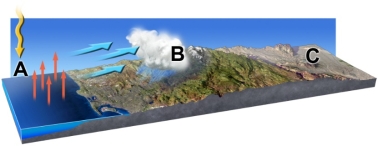
A) the atmosphere cannot rise above the mountains that shadow the area
B) the actual shadow of clouds at B causes cold dry conditions at C
C) the shadow of the mountains keeps plants from growing at C
D) the water vapor sinking at A keeps point C dry
E) moist air is forced to rise and cool over the mountains, decreasing the amount of water vapor available to point C
Correct Answer

verified
Correct Answer
verified
Multiple Choice
Which of the following sites will be most susceptible to damage from hurricanes? 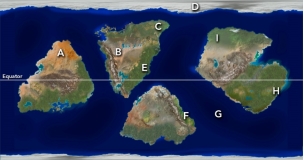
A) A and B
B) C and I
C) D on the ice-covered northern continent)
D) E, F, and H
Correct Answer

verified
Correct Answer
verified
Multiple Choice
What desert feature is shown in this photograph? 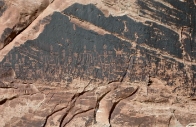
A) alluvial fan
B) playa
C) caliche
D) desert wash
E) desert varnish
Correct Answer

verified
Correct Answer
verified
Multiple Choice
Heat is applied to a container. The molecules inside the container become: 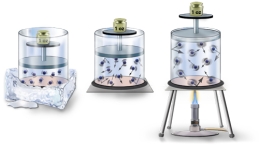
A) more energetic; pressure increases
B) less energetic; pressure increases
C) less energetic; pressure decreases
D) more energetic; pressure decreases
Correct Answer

verified
Correct Answer
verified
Multiple Choice
What desert feature is shown in this photograph? 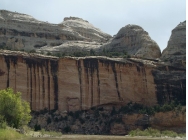
A) alluvial fan
B) playa
C) caliche
D) desert wash
E) natural stain
Correct Answer

verified
Correct Answer
verified
Multiple Choice
For the sand dunes shown here, which was does the prevailing wind blow? 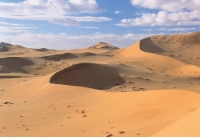
A) from right to left
B) from left to right
C) toward the viewer, along the crest of the dune
D) There is no way to tell for this type of dune.
Correct Answer

verified
Correct Answer
verified
Multiple Choice
Movement of upper air currents will create 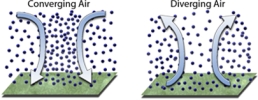
A) surface high pressure beneath upper air convergence left figure) .
B) surface low pressure beneath upper air convergence left figure) .
C) surface high pressure beneath upper air divergence right figure) .
D) no effect on surface air pressure.
Correct Answer

verified
Correct Answer
verified
Multiple Choice
Which of the following are NOT associated with a hurricane?
A) strong winds and heavy rainfall
B) a mound of water storm surge) pushed ahead of the storm
C) high atmospheric pressure
D) a relatively calm area in the center of the storm
E) all of these are associated with a hurricane
Correct Answer

verified
Correct Answer
verified
Multiple Choice
What location on this map best represents a trough of low pressure? 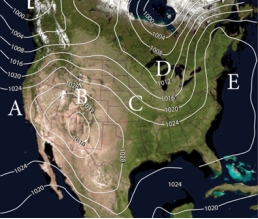
A) A
B) B
C) C
D) D
E) E
Correct Answer

verified
Correct Answer
verified
Multiple Choice
Sea surface temperature SST) generally ________ as one travels toward the poles.
A) increases.
B) decreases.
C) remains constant.
D) decreases and then increases.
Correct Answer

verified
Correct Answer
verified
Multiple Choice
What is the main setting in which rain forests occur?
A) near the equator
B) at 30° north and 30° south latitude
C) at 45° north and 45° south latitude
D) in the interior of large continents, especially Asia
Correct Answer

verified
Correct Answer
verified
Multiple Choice
What is desertification?
A) when a desert changes to some other environment
B) when a desert suffers increased erosion due to loss of plants
C) when grasslands or some other ecology is converted into a desert
D) the deposition of one layer of desert sand over another
Correct Answer

verified
Correct Answer
verified
Multiple Choice
Tornado Alley is a region in the United States comprising:
A) Florida, North Carolina, South Carolina
B) Texas, Oklahoma, Kansas, Nebraska
C) Delaware, Maryland
D) Michigan, Wisconsin, Ohio
E) Kentucky, Alabama, Tennessee
Correct Answer

verified
Correct Answer
verified
Multiple Choice
Arrows on this figure shows flow cells in the atmosphere. Which areas) would most likely be a desert? 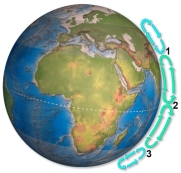
A) 1
B) 2
C) 3
D) 1 and 2
E) 1 and 3
Correct Answer

verified
Correct Answer
verified
Multiple Choice
Which of the following settings is most likely to have high precipitation?
A) cold polar air that descends and heats up
B) a site where two large-scale circulation patterns flow away from each other, causing air to descend
C) a site where two large-scale circulation patterns converge, causing air to rise and cool
D) none of these
Correct Answer

verified
Correct Answer
verified
Multiple Choice
To create a sea breeze
A) the cool air over the land sinks, creating low pressure. Warm air over water rises, creating high pressure. This creates an onshore breeze.
B) the cool air over the land rises, creating low pressure. Warm air over water sinks, creating high pressure. This creates an onshore breeze.
C) the warm air over the land rises, creating low pressure. Cool air over water sinks, creating high pressure. This creates an onshore breeze.
D) he warm air over the land sinks, creating high pressure. Warm air over water rises, creating low pressure. This creates an onshore breeze.
Correct Answer

verified
Correct Answer
verified
Multiple Choice
Monsoons are caused by
A) seasonal heating of land masses in summer that changes wind directions
B) seasonal changes in the temperature of deep-water currents
C) changes in rain forest density that in turn change evaporation rates
D) high winds that flow from mountains toward oceans
Correct Answer

verified
Correct Answer
verified
Showing 21 - 40 of 109
Related Exams